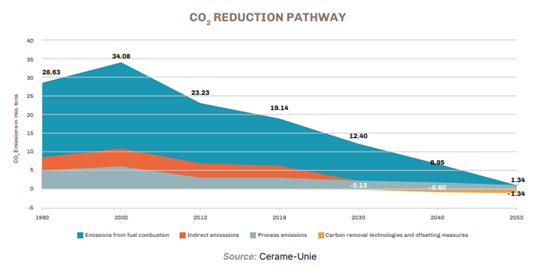The highlights of this year’s Ceramic Days in Brussels were the meeting of the European Parliament’s Ceramics Forum (EPCF), the General Assembly of the Ceramic Union and the Conference on the introduction of the “Ceramic Roadmap to 2050” ceramic-roadmap-to-2050-continuing-our-path-towards-climate-neutrality_LOW.pdf (ceramica.info) .
The Forum with the participation of representatives of the European Parliament, the European Commission and representatives of the ceramics industry from European countries was opened by the President of the EPCF Immaculada Rodriquez-Pereiro, after which the deliberations were held in two panels.
Panel 1. “Fit for 55”: How can it support the industry’s efforts to “decarbonize”? with the participation of M. Quinn (Deputy Director in the Directorate-General “Climate” of the EC) and Members of the European Parliament: E. Gualmini, P. Liese, A.Vondra and industry representative E. Mussini (President of Panariagroup and Deputy President of Confindustria Ceramica – Italy).
Panel 2. Sustainable finance: opportunities and challenges with T. Anuskevicius (Representative of DG “Growth” of the EC), S. Bonafe (EP Member), A. Affe (Deputy Director of BUSINESSEUROPE) and Dr H. Scheuch (CEO of Winerberger AG – Austria).
After the General Assembly of the Ceramic Union, during which the activities undertaken in 2021 were summarized and plans for the next year were discussed, an open conference was held: Launch of the “Ceramics RoadMap by 2050”. After the introduction by UC President A. Delcourt, two panel debates were held.
Panel 1. How can ceramics contribute to the wellbeing of a resilient carbon neutral Europe in 2050
Panel 2. Why ceramics are essential to deliver on the Green Deal and a carbon neutral Europe?
The study “Ceramics Roadmap to 2050” presents, m.in, a CO2 emission reduction model that combines a number of measures to achieve neutrality by 2050. These include:
• Transition to renewable (green) hydrogen, biofuels and decarbonisation of electricity.
• Reduction of emissions from technological processes.
• Innovation and increased efficiency in production processes
• CCS/CCU capturing CO2.
• Other carbon dioxide removal technologies and compensatory measures.

